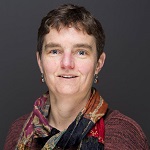Events
How Well Do Infants and Young Children Control Their Own Visual Experience?
Hosted By: Clinical Vision Sciences Technical Group
31 May 2023 10:00 - 11:00
Eastern Time (US & Canada) (UTC - 05:00)Key demonstrations of neuroplasticity during early postnatal development have used disruptions of visual experience such as imposed visual deprivation, strabismus or anisometropia. Young human infants and children must actively coordinate their own retinal image quality and alignment in order to support typical visual development, a process that has received relatively little attention.
In this webinar hosted by the Clinical Vision Sciences Technical Group, Prof. Rowan Candy will examine the early development of this motor coordination in the context of interacting with the visual environment, including the potential impact of challenging immaturities such as refractive error, reduced interpupillary distance and immature spatial vision. Our current understanding will be discussed in the context of both typical development and clinical conditions.
What You Will Learn:
• Visual development
• Early development of motor coordination
• Infant vision
Who Should Attend:
• Research scientists
• Graduate students
• Clinicians
About the Presenter: Rowan Candy from The Indiana University School of Optometry
 Dr. Candy completed her optometry training in the UK and then a PhD in Vision Science at the University of California Berkeley. After completing a post-doc at Smith-Kettlewell Eye Research Institute, she joined the faculty at Indiana University in Bloomington. She is currently the Associate Dean for Academic Affairs in the School of Optometry and a member of the IU Vision Science, Cognitive Science and Neuroscience programs. She is a Fellow of ARVO and has served on the editorial boards of Investigative Ophthalmology & Visual Science, Journal of Vision, Annual Review of Vision Science and Optometry & Vision Science. She currently serves on the Board of Directors of Vision Sciences Society. Her research has been funded by the National Eye Institute for 20 years.
Dr. Candy completed her optometry training in the UK and then a PhD in Vision Science at the University of California Berkeley. After completing a post-doc at Smith-Kettlewell Eye Research Institute, she joined the faculty at Indiana University in Bloomington. She is currently the Associate Dean for Academic Affairs in the School of Optometry and a member of the IU Vision Science, Cognitive Science and Neuroscience programs. She is a Fellow of ARVO and has served on the editorial boards of Investigative Ophthalmology & Visual Science, Journal of Vision, Annual Review of Vision Science and Optometry & Vision Science. She currently serves on the Board of Directors of Vision Sciences Society. Her research has been funded by the National Eye Institute for 20 years.
